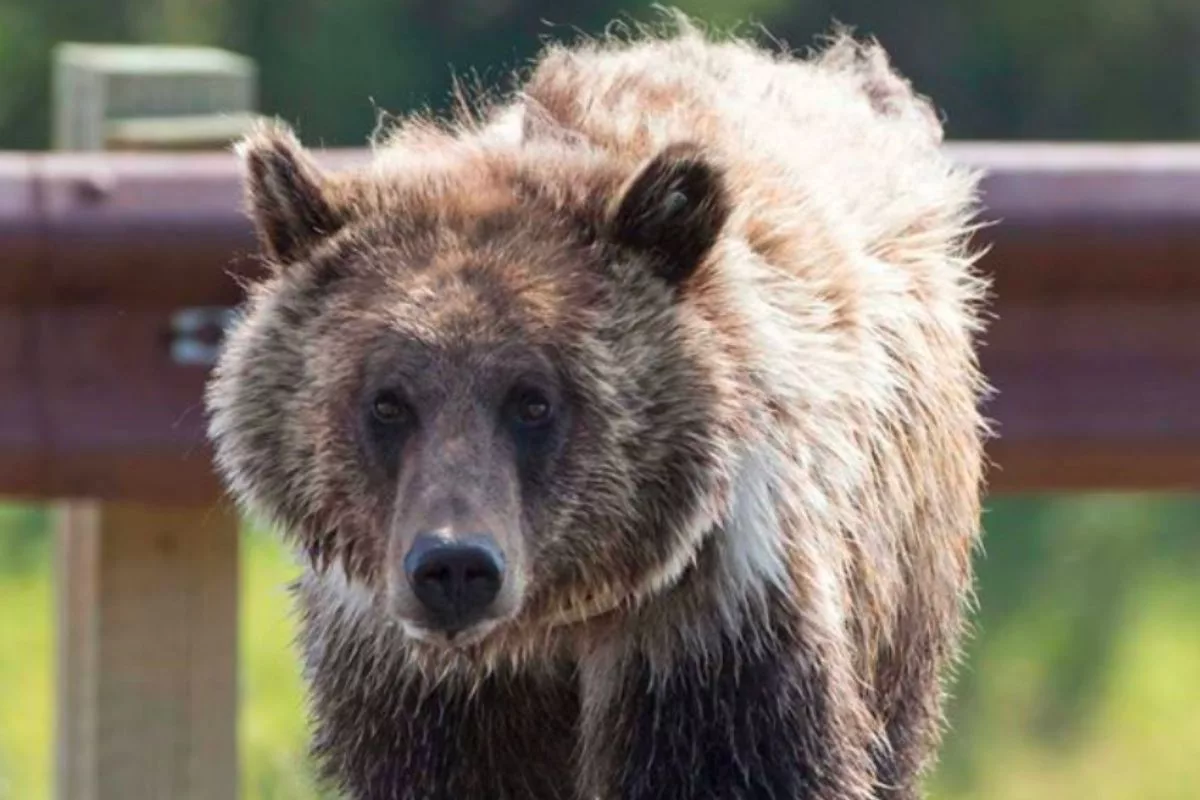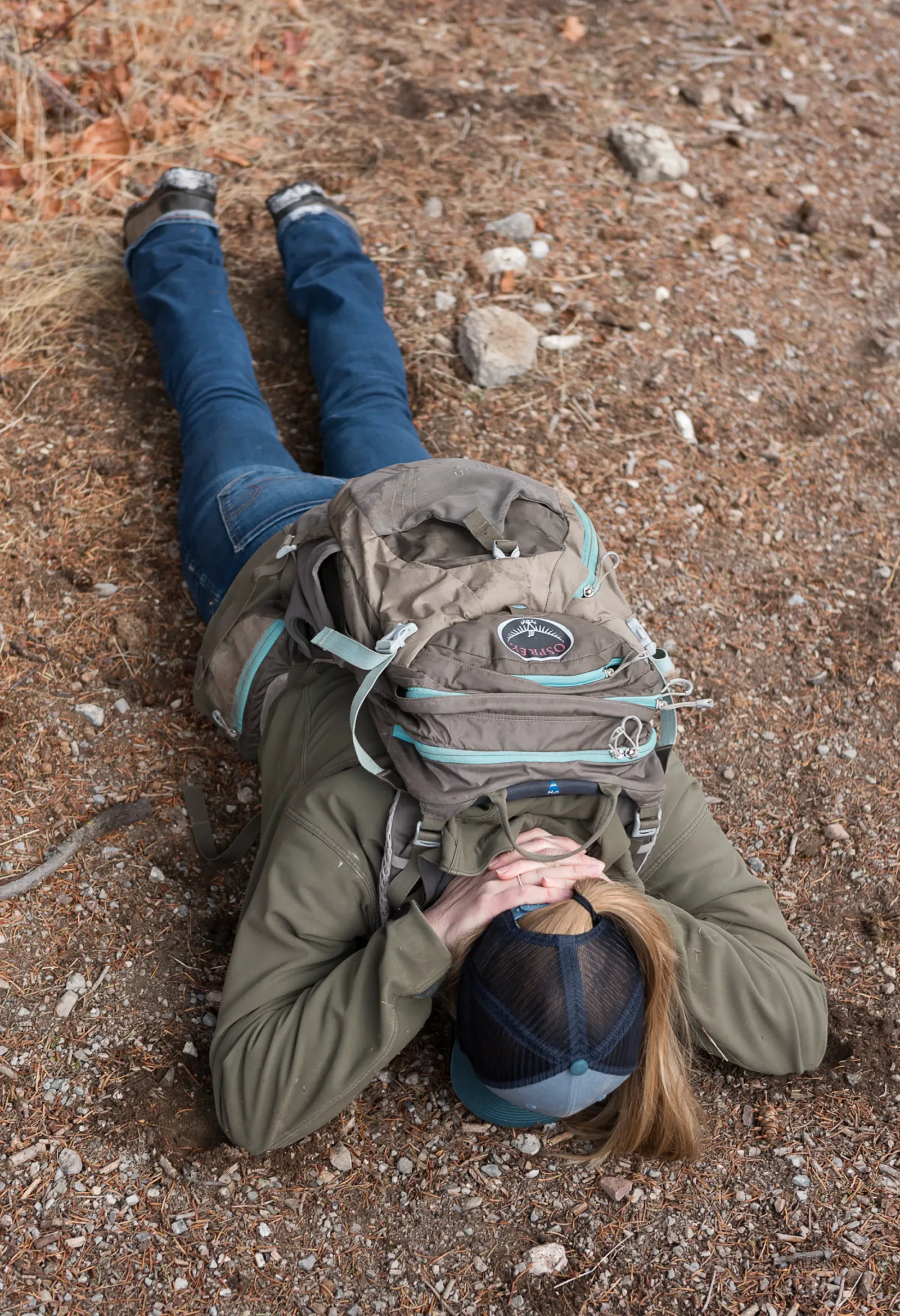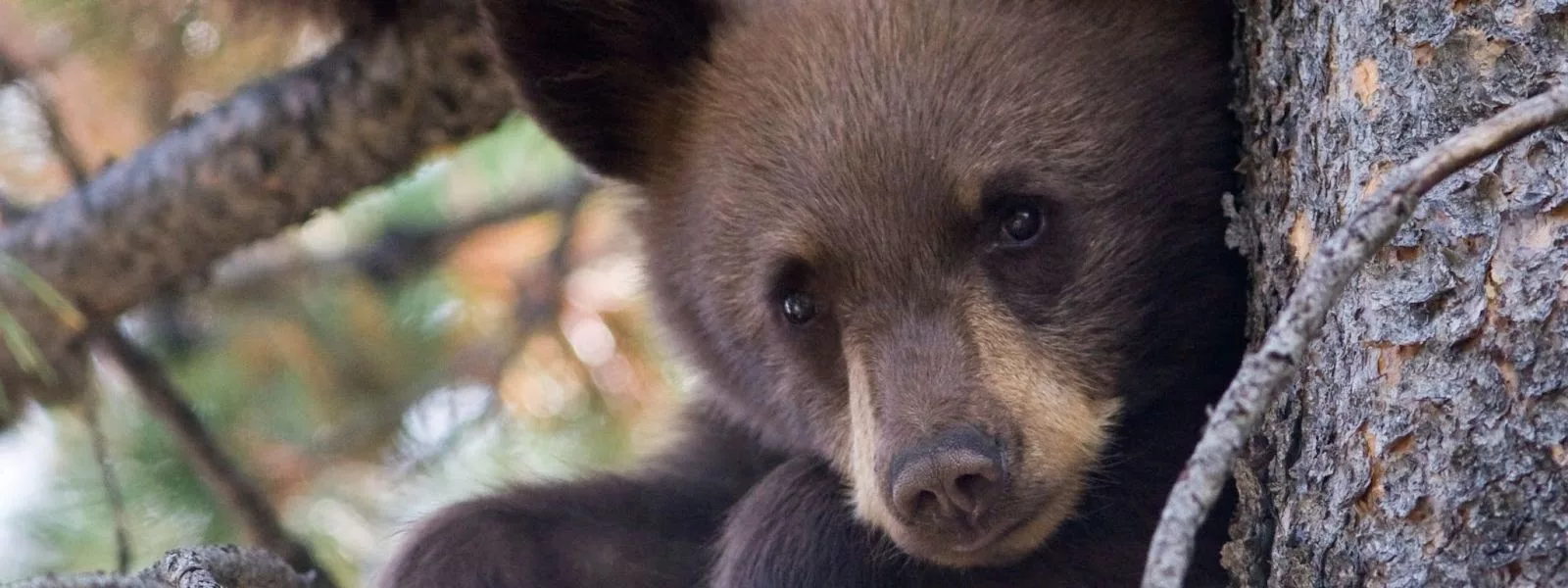
Read the Signs
No bear encounter is ever the same, that’s why it is very important to understand bear behavior to keep yourself and others safe. Fortunately, bear behavior is often predictable and correctly interpreting their behaviors can help you decide how you should react when you encounter a bear. Below we discuss defensive vs. predatory encounters and how to respond.
Defensive Bears
Majority of encounters with bears are defensive where a bear is defending their space, food or offspring. When acting defensivly, bears may display behaviors like:
- Ears pinned back
- Swatting at the ground
- Yawning
- Jaw popping
- Vocalizations like huffing, woofing, and growling
- Bluff charging
While both species can climb trees, black bears tend to climb trees to avoid confrontations. Grizzly bears are more inclined to run away or attack when threatened.
Predatory Bears
Predatory attacks on humans by bears are extremely rare, but it is important that you can identify predatory behaviors so you know how to react. Predatory behaviors include:
- Stalking
- Circling
- Intent focus on their intended prey
- Using cover to get close
- Use sudden, explosive bursts of speed to catch prey off guard
Predatory behavior is more common with black bears than grizzly bears. Bears that have received anthropogenic foods are more likely to exhibit predatory behavior. Help protect others by reporting all bear incidents immediately to Wyoming Game and Fish.

What to Do When You Encounter a Bear
Always keep your distance from bears and never approach them. If you see a bear from a distance, and the bear has not seen you, detour quickly and quietly away. If the bear has seen you:
- Stay calm
- DO NOT run
- Talk to the bear, let it know you are human without being aggressive
- If the bear charges, deploy your bear spray when the bear is in range. Learn how here.
Next, we’ll learn use our knowledge of bear behavior to properly respond to a bear attack.
How to Respond to Defensive Bears
Defensive attacks usually occur during a surprise encounter. Making noise, traveling in groups and choosing routes wisely are good ways to avoid these encounters. Bears may exhibit the signs of stress described above. If you encounter a defensive bear:
Use your bear spray when the bear is within range.
If you do not have your bear spray, and the bear is going to make contact with you:
- Drop to the ground and lie flat on your stomach with your legs slightly spread apart and “play dead.”
- Use your hands to protect the back of your neck, and keep your backpack on to protect your back.
- Stay as still and quiet as possible well after the bear leaves the area.
- If the bear rolls you over, keep rolling until you are back on your stomach.

How to Respond to Predatory Bears
Predatory attacks are VERY RARE! If you encounter a bear that does not appear stressed, is intent on you and following you, do everything you can to communicate that you are not prey!
- Use your bear spray when the bear is within range.
- Do not run!
- Make your self look big and yell and wave your arms at the bear.
- Keep your group close together.
- Throw rocks, sticks, or whatever is available at the bear.
- Back away slowly.
If you are attacked by a predatory bear you need to fight back with any means necessary, do not drop and play dead! If any bear attacks you in your tent, this is considered a predatory attack and you should fight back!

Bear Spray
Bear spray is a non-lethal deterrent designed to stop aggressive behavior in bears. Its use can reduce human injuries caused by bears. Bear spray uses a fine cloud of Capsicum derivatives to temporarily reduce a bear’s ability to breath, see, and smell, giving you time to leave the area.
Tips for Use
- Keep bear spray readily accessible and never keep it in your pack or out of reach.
- You don’t have to be a good shot with bear spray. Just put up a cloud of spray between you and the charging bear.
- Practice! Use an inert can of bear spray to practice removing it from your holster, removing the safety tab with your thumb, and firing. Practice firing inert bear spray with the wind at your back, into a head wind, and with a crosswind so that you understand how bear spray is affected by the wind.
- Bear spray not like insect repellent! It does not work as a deterrent when applied to people or equipment.
- Make sure your spray is designed for bears. Do not rely on self defense pepper spray products designed for use on humans, they are ineffective on bears.
- Never leave your bear spray in a hot car.
- Make sure your bear spray hasn’t expired.


